🧠 Cognitive Science: Essential Concepts for Reading Comprehension
Cognitive Science is an interdisciplinary field that investigates how humans think, learn, and remember. By combining insights from psychology, neuroscience, linguistics, and artificial intelligence, this discipline explores the intricacies of the human mind. Reading comprehension passages often delve into topics like memory, problem-solving, and decision-making, requiring readers to analyze arguments and apply critical thinking. Mastering cognitive science concepts will not only enhance your RC skills but also deepen your understanding of human behavior and learning processes.
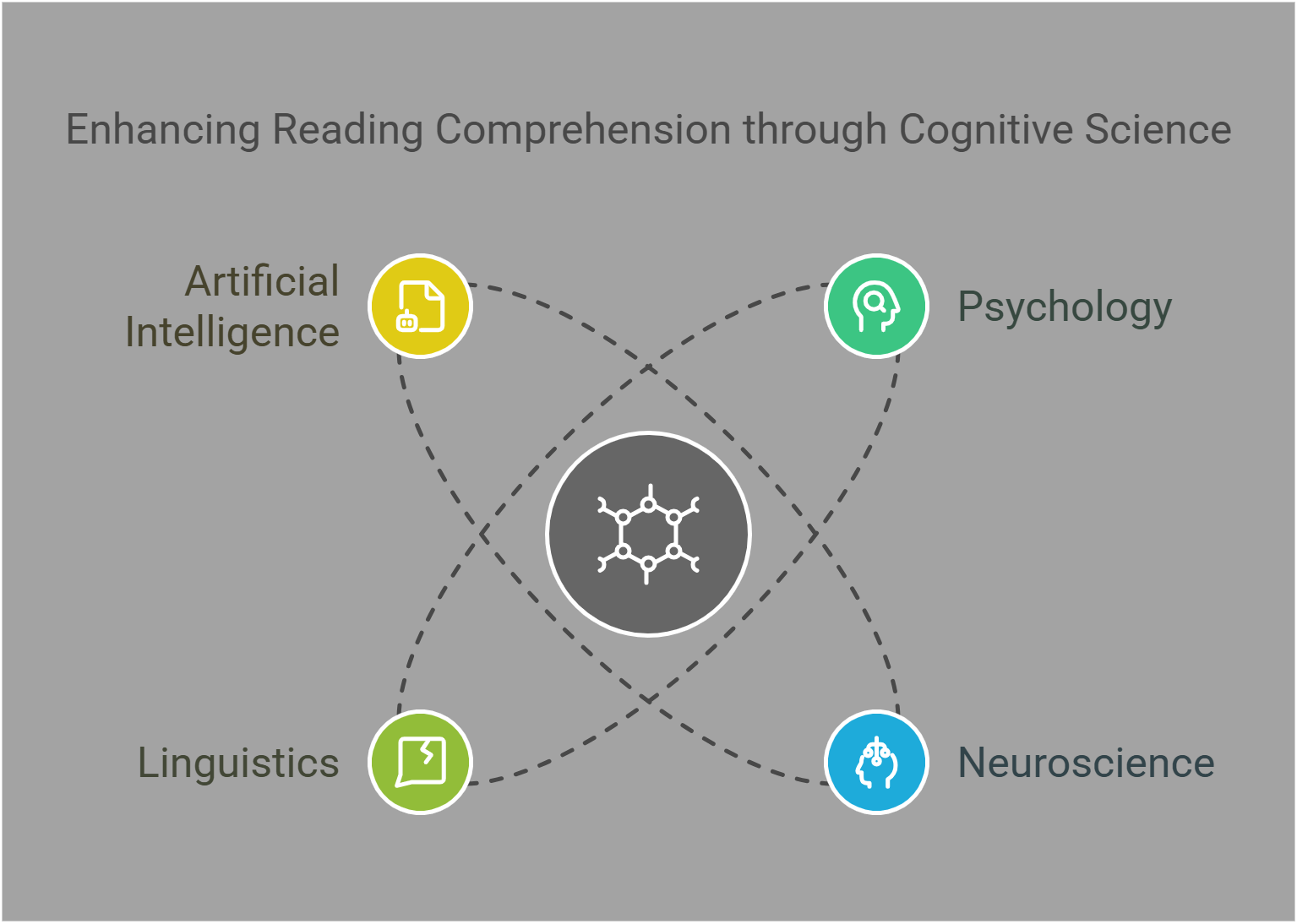
📋 Overview
This article explores the following essential cognitive science concepts:
- Memory Systems
- Perception and Attention
- Decision-Making
- Problem-Solving
- Learning Theories
- Cognitive Biases
- Artificial Intelligence and Cognition
- Language Processing
- Neuroscience of Cognition
- Consciousness
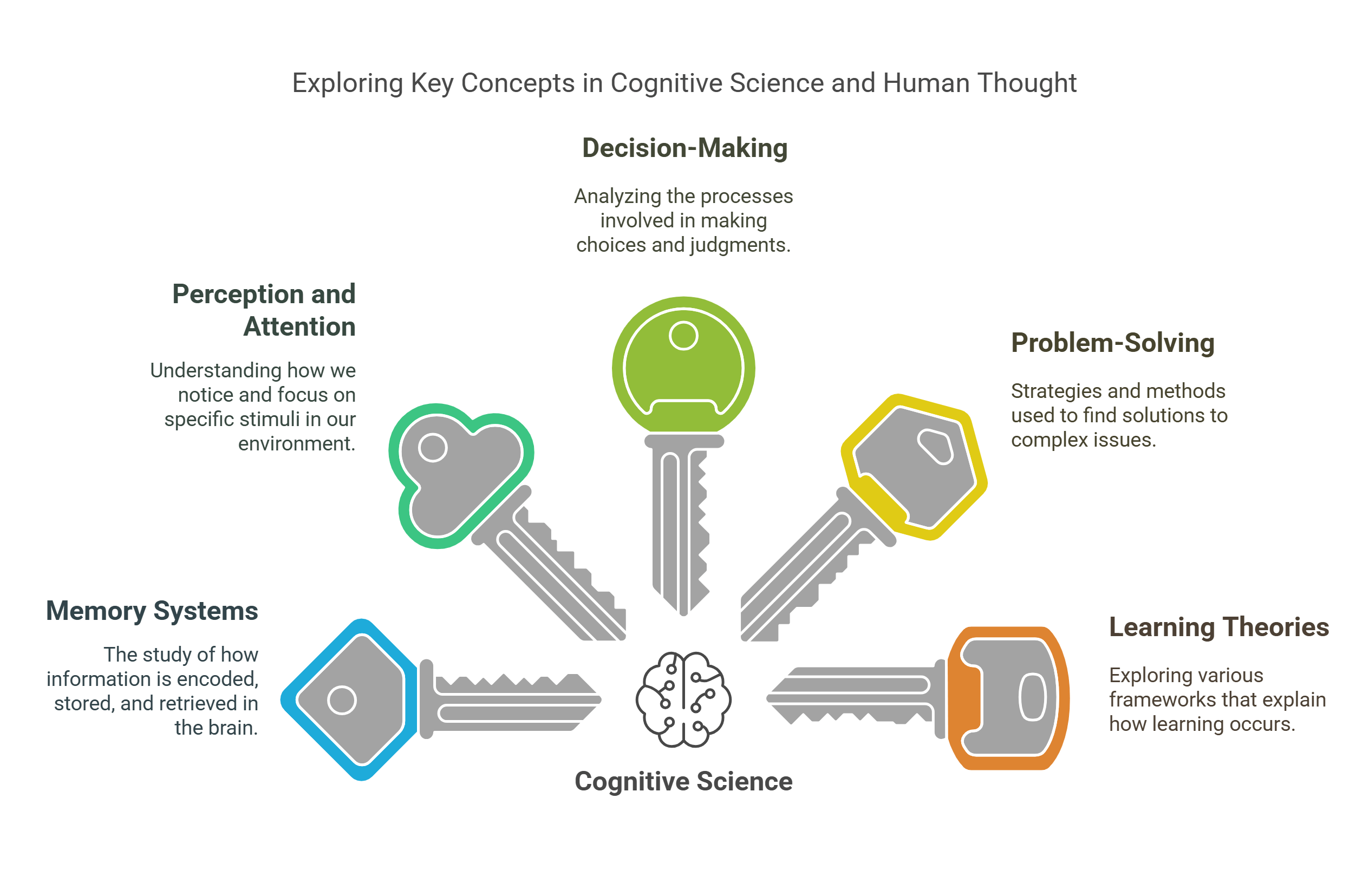
🔍 Detailed Explanations
1. Memory Systems
Memory forms the cornerstone of cognitive science, enabling us to store, organize, and retrieve information. It’s divided into three primary types:
- Sensory Memory: Retains fleeting sensory impressions for milliseconds. For example, the sound of a bird chirping or the sight of a flash of lightning.
- Short-Term Memory: Temporarily holds information for 20–30 seconds. Think of remembering a phone number just long enough to dial it.
- Long-Term Memory: Stores information indefinitely, from personal experiences to general knowledge. For instance, recalling your first day at school or the capital of France.
🔑 Extended Explanation: Memory is like a multi-level library. Sensory memory is the sticky note reminding you of where the book is, short-term memory is the table where you review a book, and long-term memory is the library’s archives where knowledge is preserved indefinitely.
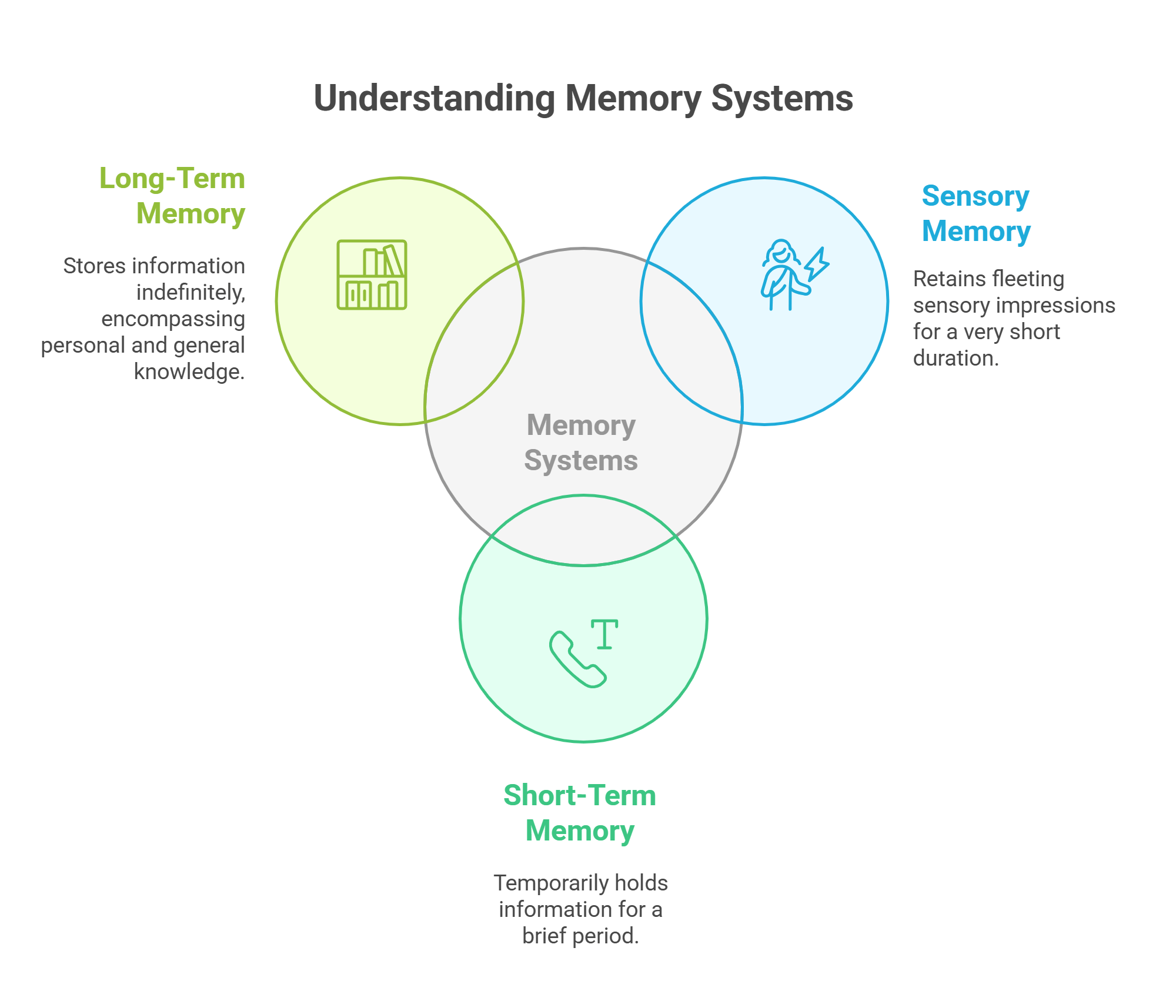
2. Perception and Attention
Perception involves interpreting sensory input to make sense of the world, while attention acts as a mental filter, determining which stimuli we focus on. These processes work in harmony to shape our understanding:
- Perception: Combines sensory data (sight, sound, smell, etc.) into coherent experiences, like recognizing a friend’s voice in a noisy room.
- Attention: Prioritizes certain inputs over others, ensuring efficiency. For example, focusing on a speaker in a crowded auditorium while ignoring background chatter.
- Inattentional Blindness: Highlights how selective attention can cause us to overlook obvious stimuli, such as missing a pedestrian while focusing on traffic signals.
🔑 Extended Explanation: Perception and attention together are like a camera. Perception is the lens capturing the scene, and attention is the focus mechanism that sharpens specific details. Without attention, the picture may blur, making important elements harder to grasp.

3. Decision-Making
Decision-making is the cognitive process of selecting the best course of action among multiple options. It is influenced by a mix of logic, emotions, and mental shortcuts (heuristics):
- Rational Models: Rely on logical evaluation of pros and cons, such as weighing the cost and quality of two products.
- Emotional Influences: Emotions like excitement or fear often sway decisions, such as buying something impulsively because it feels “right.”
- Heuristics: Quick mental shortcuts, like choosing a brand because it’s familiar, though these can lead to biases.
🔑 Extended Explanation: Think of decision-making as planning a trip. Logic acts like GPS, suggesting the fastest route. Emotions guide you to scenic detours. Heuristics, like a trusted traveler’s advice, help simplify decisions when you’re short on time.
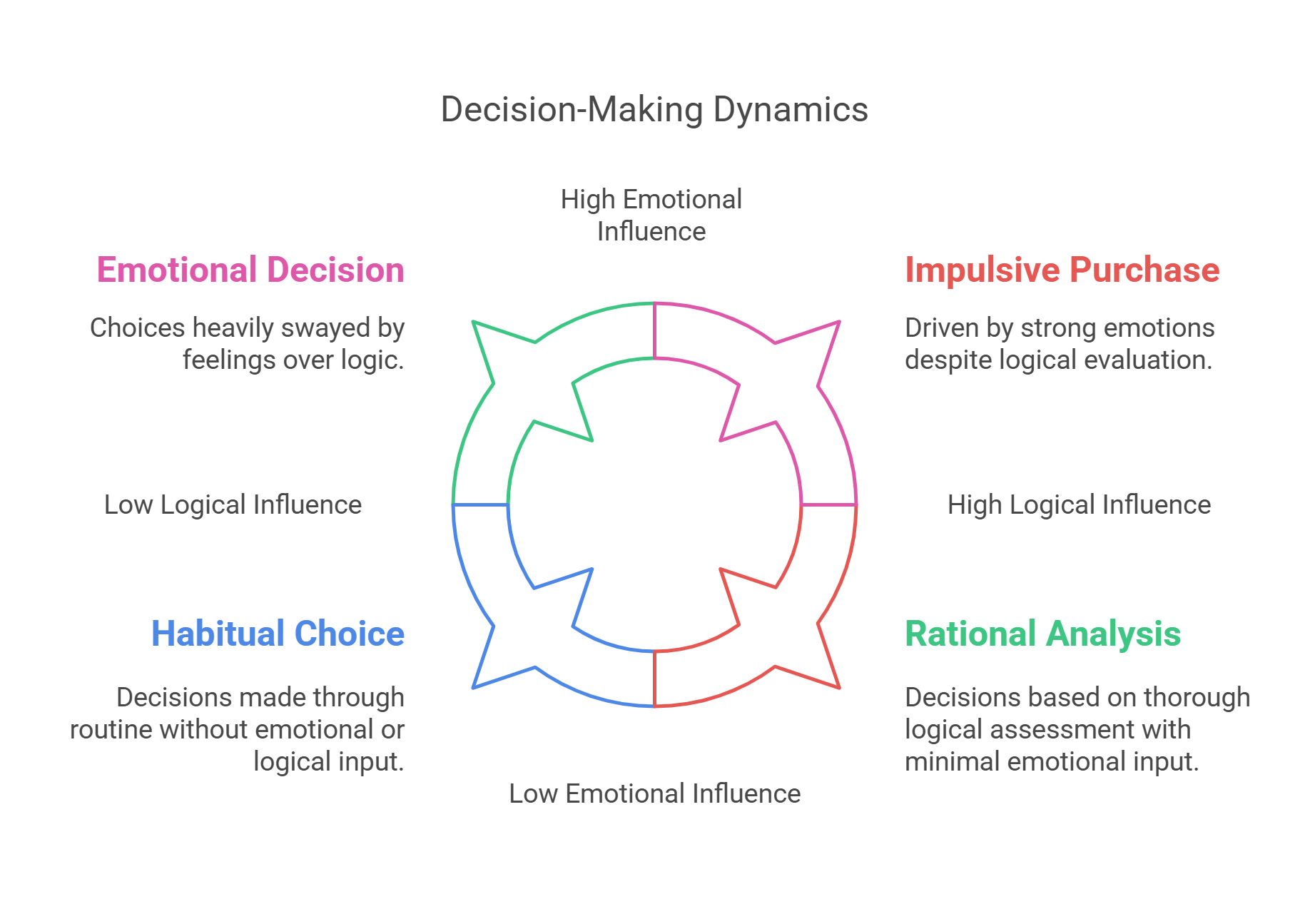
4. Problem-Solving
Problem-solving involves using mental strategies to overcome challenges. It includes defining the problem, generating solutions, and evaluating results:
- Algorithms: Step-by-step methods ensuring accuracy, such as using a formula to calculate interest.
- Insight: Sudden realizations or “aha” moments, like figuring out the missing piece of a riddle.
- Creative Problem-Solving: Thinking innovatively, often breaking traditional patterns to find unique solutions.
🔑 Extended Explanation: Problem-solving is like solving a jigsaw puzzle. Algorithms guide you in sorting edges first; insight strikes when you see how two tricky pieces fit; creativity emerges when you realize you can rotate pieces differently.
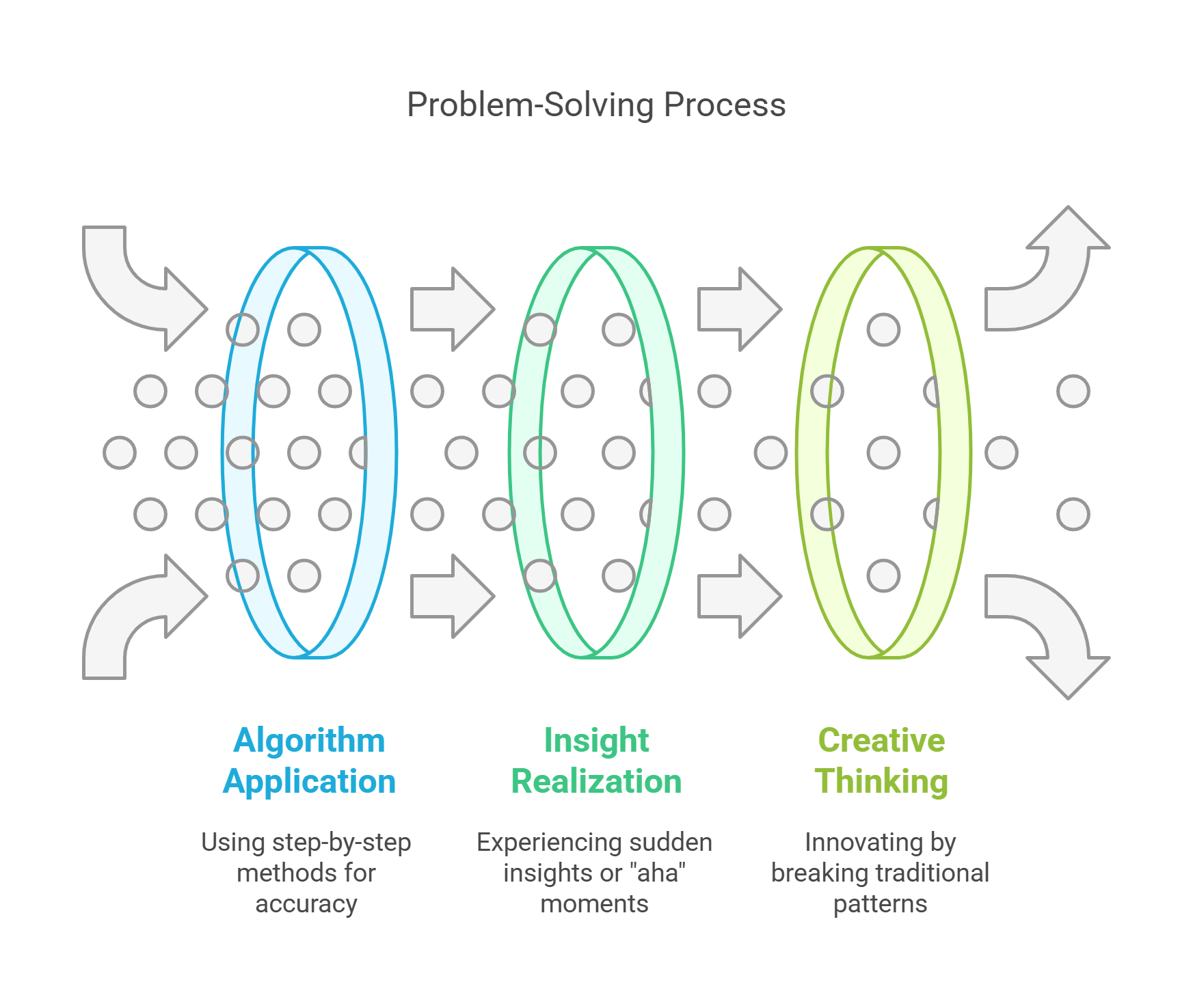
5. Learning Theories
Learning theories explain how individuals acquire and apply knowledge, providing frameworks for effective education:
- Behaviorism: Focuses on learning via rewards and punishments. For example, Pavlov’s experiments with dogs associating a bell with food.
- Constructivism: Emphasizes building knowledge through experience and active engagement, like learning a language by speaking it.
- Cognitive Load Theory: Highlights the mental effort required during learning, advocating for chunking information to reduce overload.
🔑 Extended Explanation: Learning is like nurturing a plant. Behaviorism is the fertilizer encouraging specific growth; constructivism is the sunlight enabling natural development, and cognitive load theory ensures you don’t overwhelm the plant with too much water.
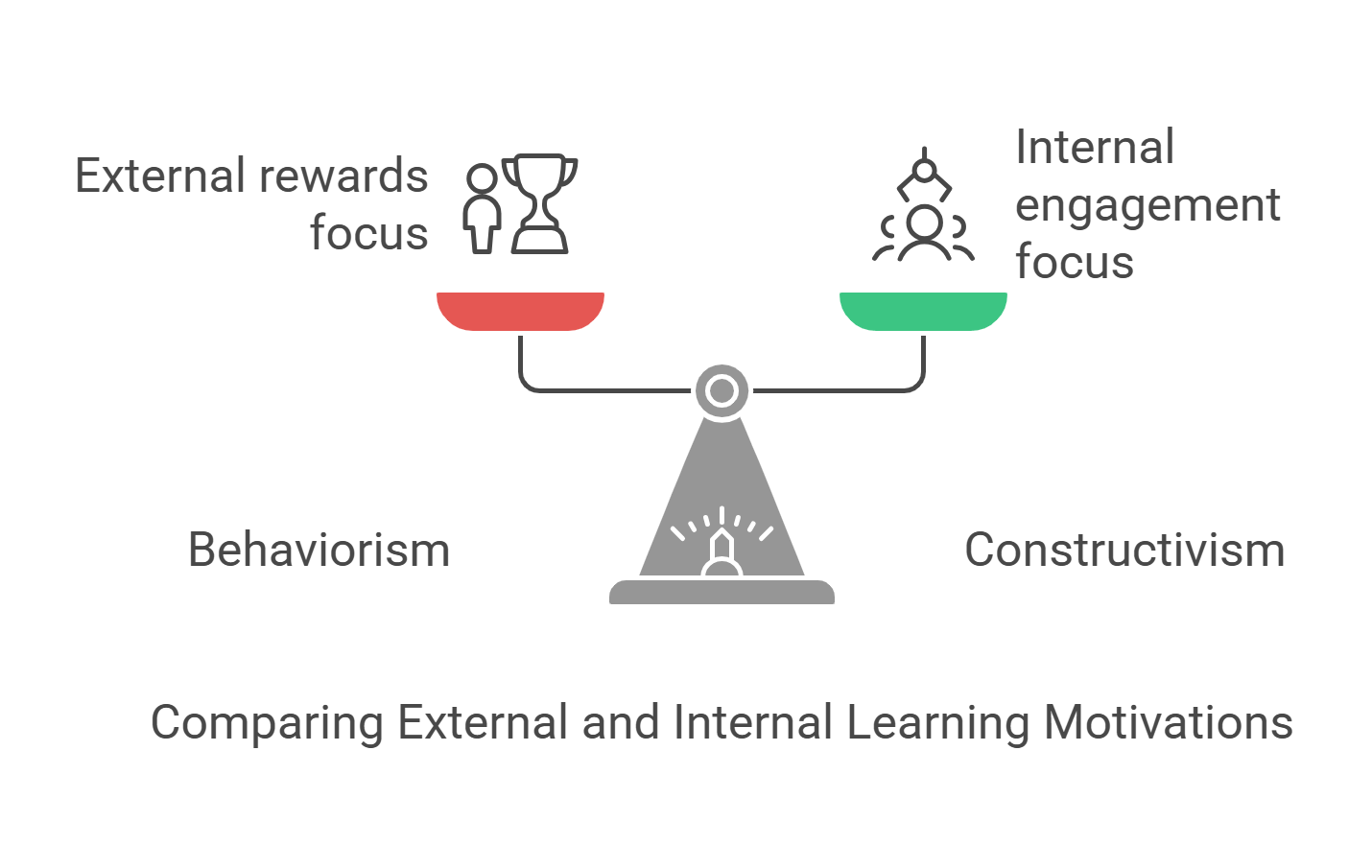
6. Cognitive Biases
Cognitive biases are systematic errors in thinking that skew judgment and decisions:
- Confirmation Bias: Seeking information that aligns with existing beliefs, ignoring contrary evidence.
- Anchoring Bias: Over-relying on the first piece of information encountered, like being fixated on the starting price during negotiation.
- Availability Heuristic: Overestimating the likelihood of events based on how easily examples come to mind, like fearing plane crashes after a widely reported accident.
🔑 Extended Explanation: Cognitive biases are mental shortcuts, akin to wearing tinted glasses that alter your perception. They simplify complex choices but can cloud judgment, leading to irrational decisions.
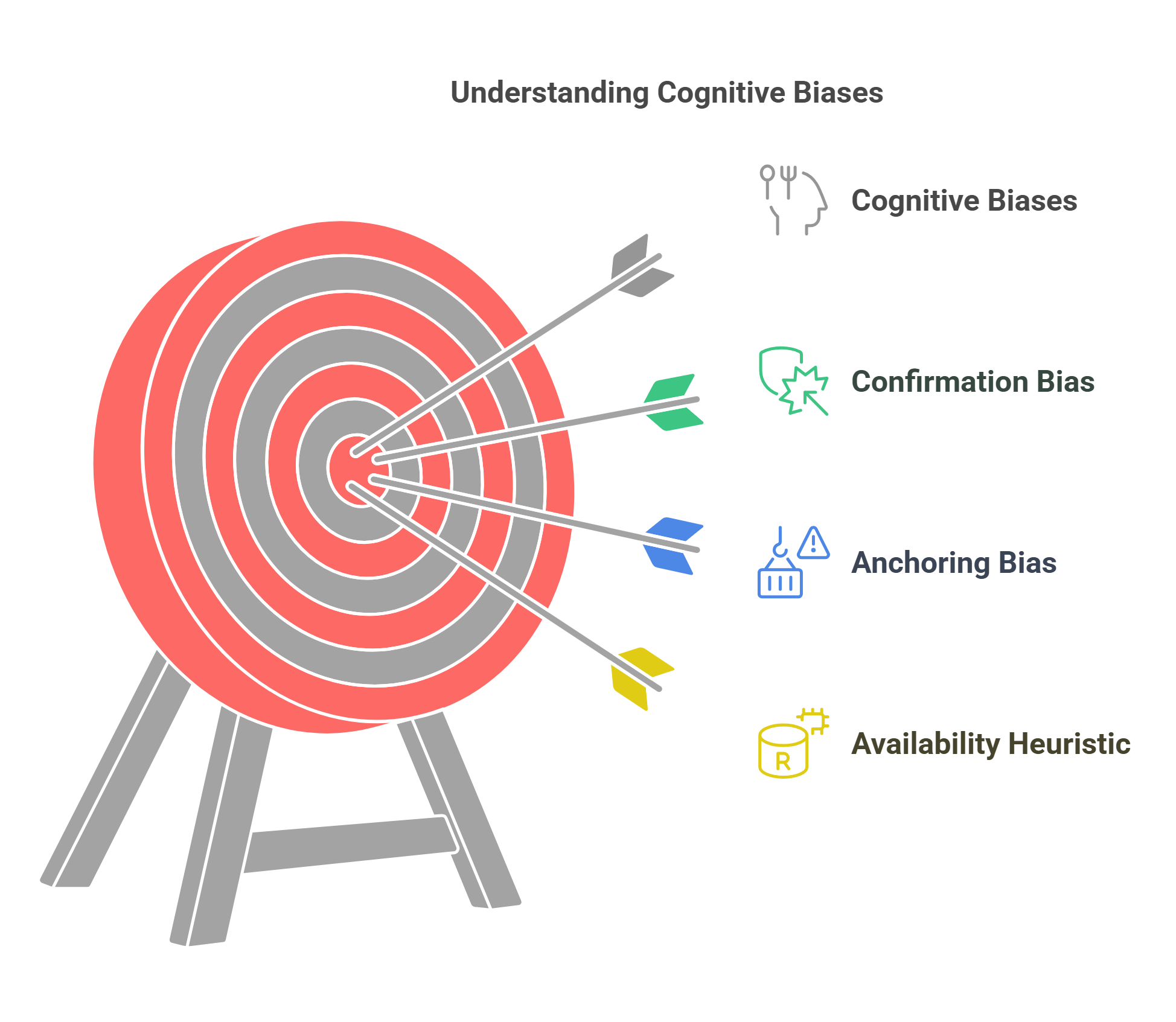
7. Artificial Intelligence and Cognition
Artificial Intelligence (AI) seeks to replicate human cognitive abilities, such as learning, reasoning, and problem-solving:
- Machine Learning: Enables AI to improve through data patterns, such as recommending movies on streaming platforms.
- Applications: Include voice assistants, autonomous vehicles, and fraud detection systems.
- Ethical Concerns: Raise questions about decision-making transparency and bias in AI systems.
🔑 Extended Explanation: AI is like a diligent student learning from data “teachers.” While it excels in some subjects, its lack of creativity and ethical judgment can lead to unintended consequences.
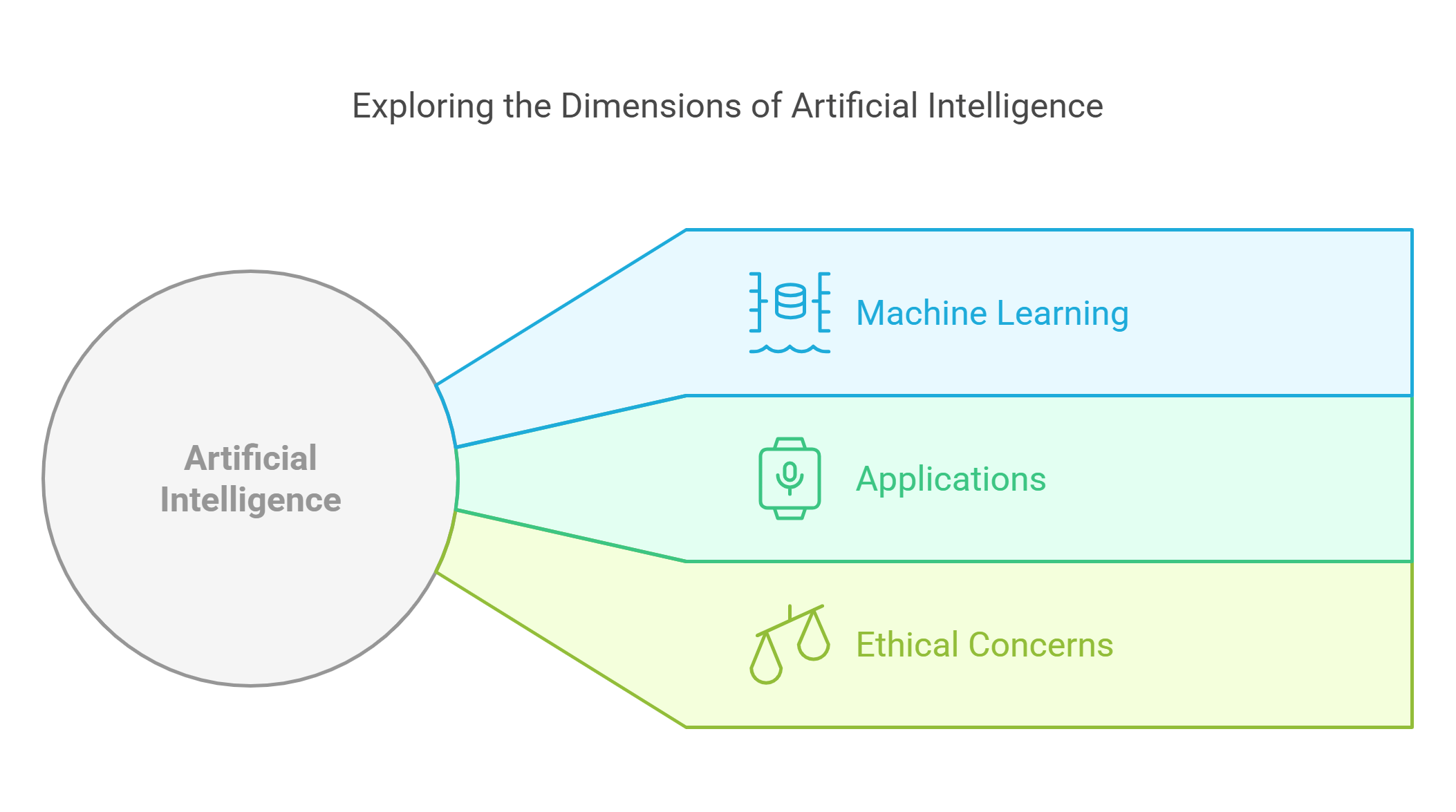
8. Language Processing
Language processing explores how humans understand, produce, and acquire language:
- Syntax and Semantics: Govern sentence structure and meaning.
- Bilingualism: Offers cognitive flexibility but may present challenges in switching languages.
- Speech Recognition: Examines how the brain translates sounds into words.
🔑 Extended Explanation: Language processing is like solving a puzzle. Syntax is fitting pieces in the right slots, and semantics ensures the final picture makes sense.
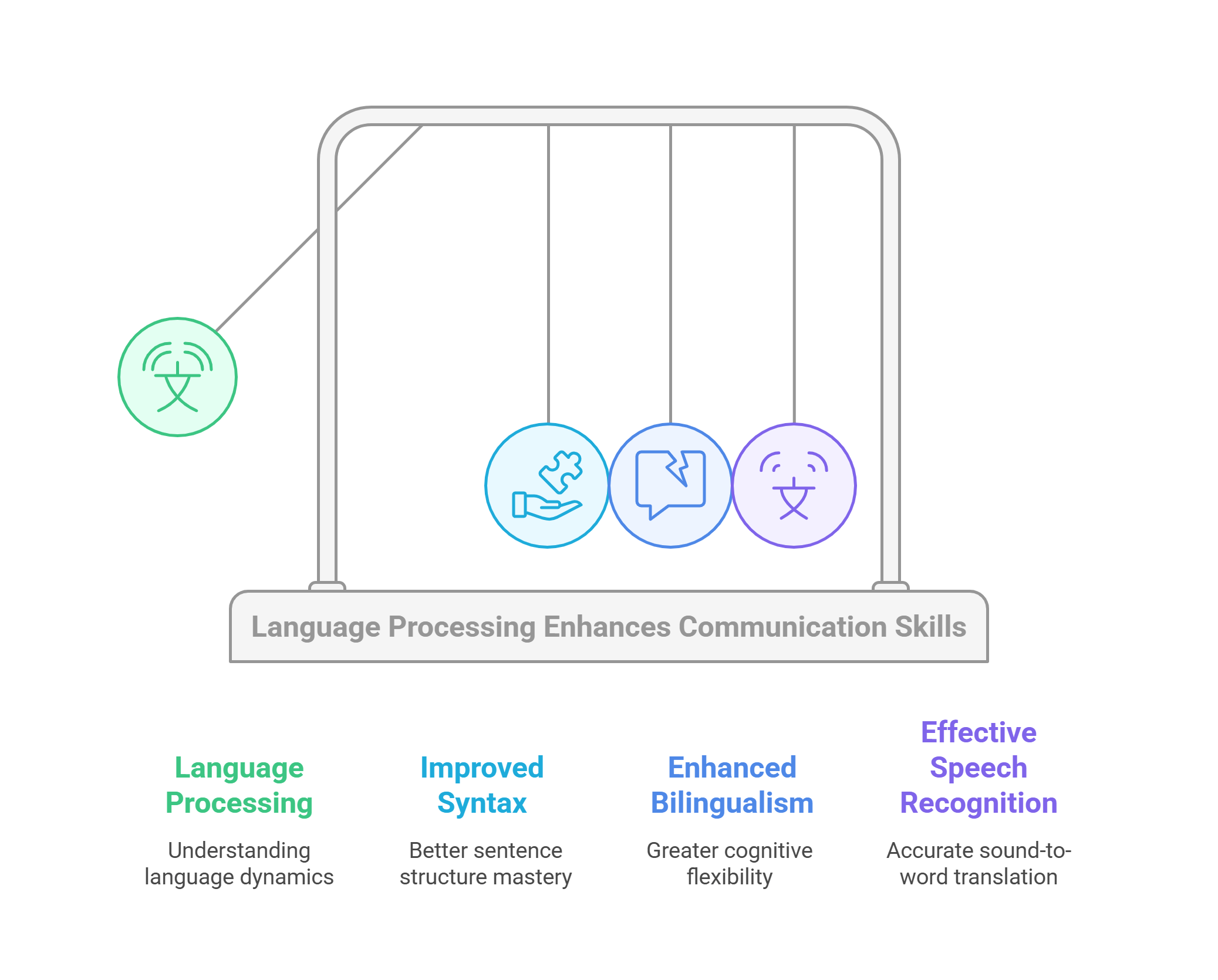
9. Neuroscience of Cognition
Neuroscience examines the brain’s biological mechanisms that drive cognitive processes:
- Neurons: Act as the brain’s communication highways.
- Prefrontal Cortex: Plays a key role in planning, decision-making, and self-control.
- Neuroplasticity: Demonstrates the brain’s capacity to reorganize itself after injury or new learning.
🔑 Extended Explanation: The brain is like a city where neurons are highways, synapses are traffic lights, and neuroplasticity allows roads to be rebuilt after damage.
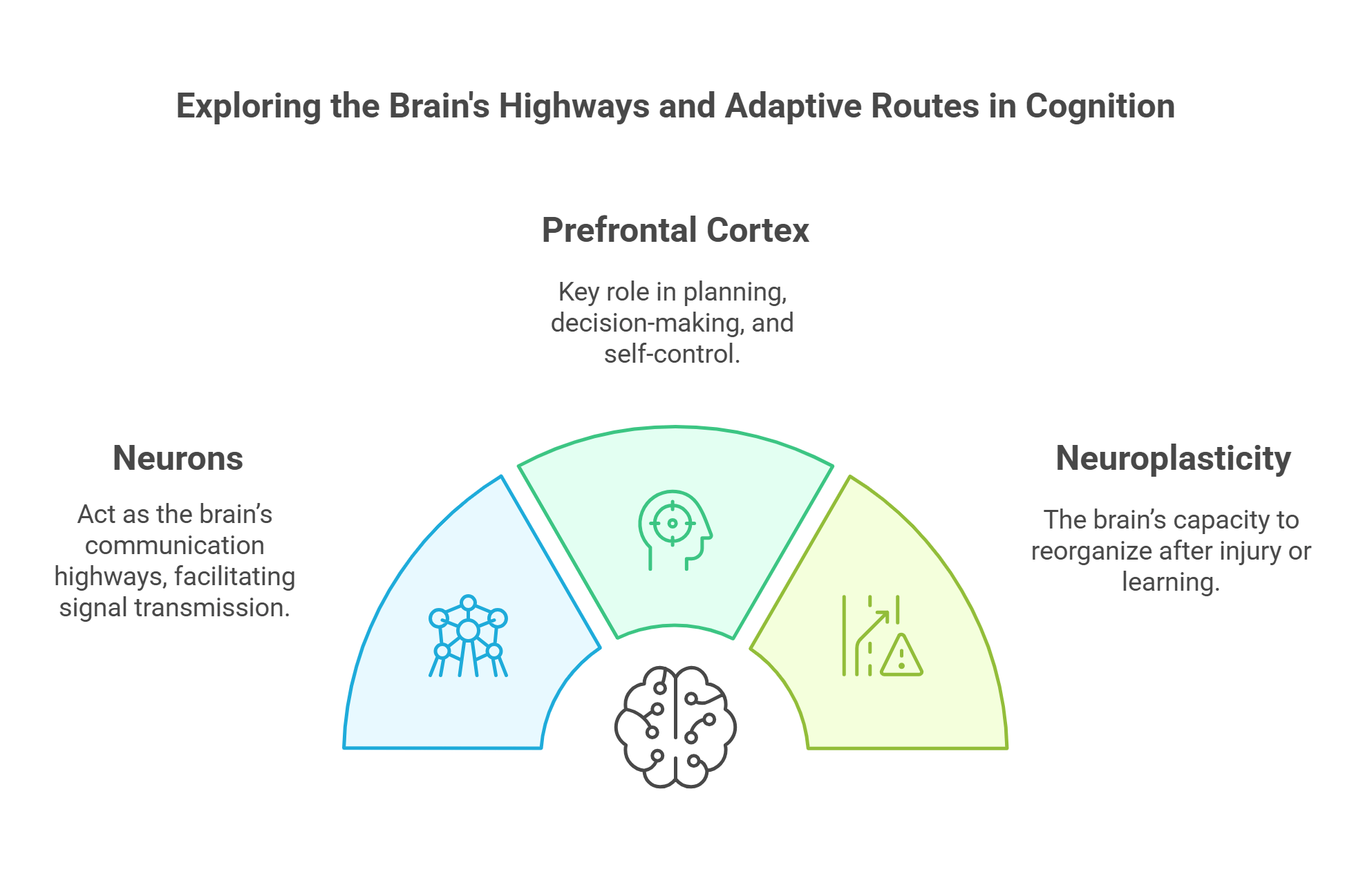
10. Consciousness
Consciousness encompasses our awareness of thoughts, emotions, and surroundings:
- States: Include wakefulness, dreaming, and meditative states.
- Philosophical Questions: Ponder the essence of awareness and its purpose.
- Theories: Range from neural correlates to abstract metaphysical explanations.
🔑 Extended Explanation: Consciousness is like the light illuminating a room. When it’s on, you’re aware of everything; when dimmed or off, the clarity fades, leaving only fragments.
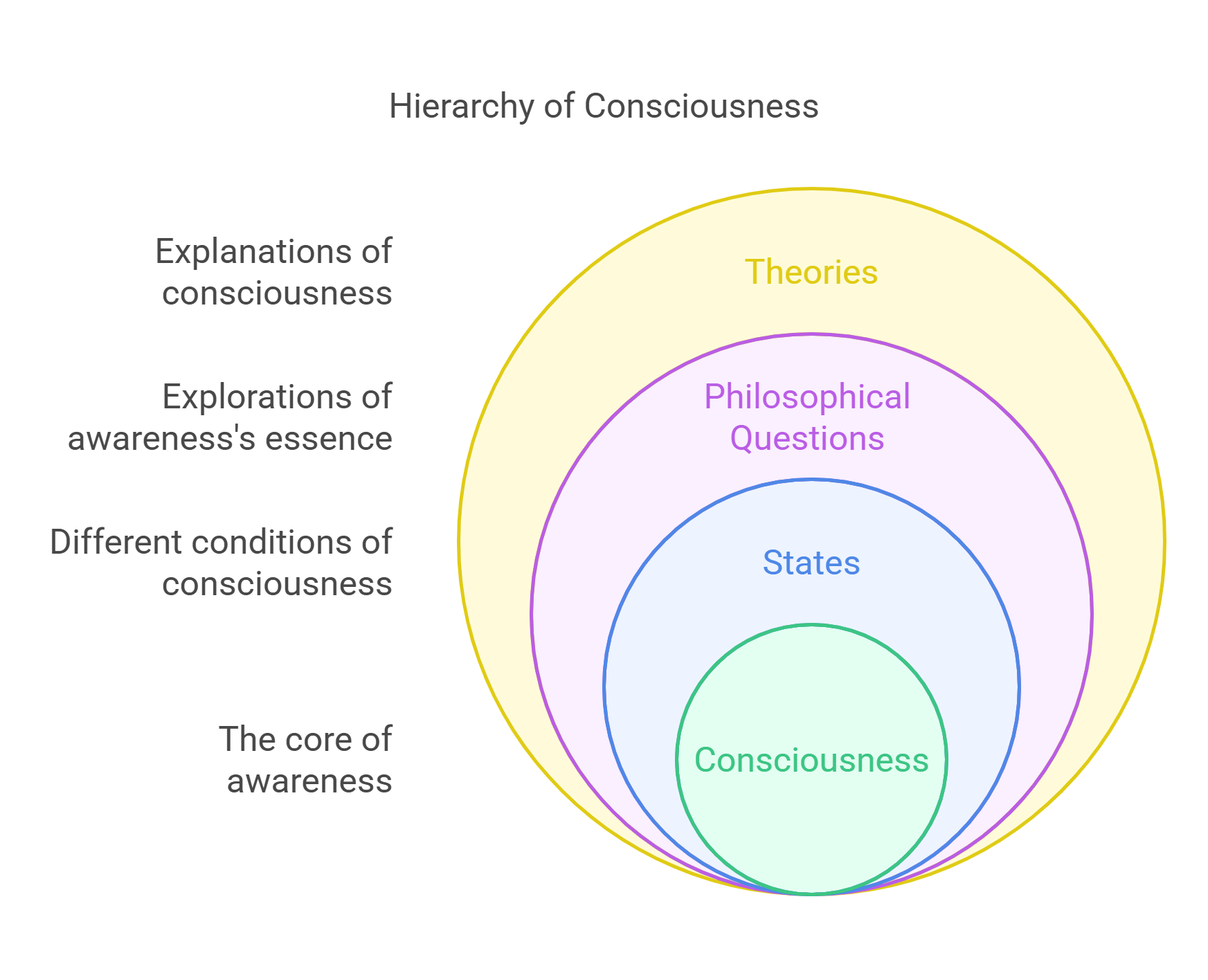
✨ Conclusion
Cognitive Science bridges the gap between the mysteries of the mind and practical insights into human behavior. By mastering these concepts, you’ll sharpen your ability to decode RC passages, analyze arguments, and think critically. 🌟










